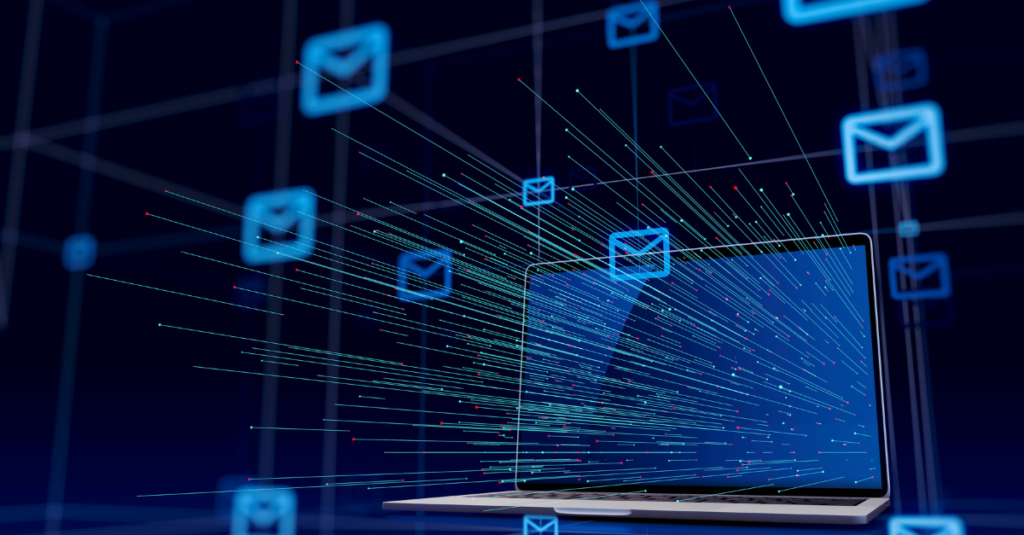Remote learning has transformed education, making email a primary communication tool for students, educators, and administrators. From sharing assignments and providing feedback to coordinating virtual classes, email plays a central role in ensuring smooth academic operations. However, as its usage increases, so do cybersecurity threats targeting email systems.
Cybercriminals exploit email vulnerabilities to steal sensitive data, disrupt learning environments, or commit fraud. A single phishing email or malware-infected attachment can compromise student records, faculty credentials, and institutional data. Educational institutions must take proactive steps to strengthen email security and ensure uninterrupted, secure communication in remote learning environments.
This guide explores email security threats, best practices for protection, and how institutions can safeguard their digital communications.
The Role of Email in Remote Education
Email serves as the backbone of digital learning, enabling seamless communication between students, teachers, and administration. It is used for:
- Assignment submissions and feedback – Professors and students exchange coursework, grades, and study materials.
- Academic and administrative coordination – Institutions send updates about schedules, policies, and events.
- Collaboration and research – Faculty members share academic findings and discuss research projects.
- Access to learning platforms – Many learning management systems (LMS) require email authentication for access.
Despite its convenience, email remains one of the most targeted attack vectors in remote learning. Cybercriminals exploit weak security practices to gain unauthorized access, disrupt classes, or demand ransom for stolen data. Ensuring email security is not just about protecting messages—it’s about safeguarding the entire learning ecosystem.
Understanding Email Security Threats
1. Phishing Attacks: A Major Concern
Phishing attacks are among the most common and effective email-based threats in education. Cybercriminals impersonate professors, administrators, or IT staff to trick students or faculty into:
- Clicking on fraudulent links that steal login credentials.
- Downloading infected attachments containing malware.
- Disclosing personal or financial information under false pretenses.
Phishing scams can disrupt education by compromising student data, financial records, and access to academic portals. To combat this, institutions must implement email filtering solutions and security awareness training as part of their cybersecurity services in Charleston strategy.
2. Malware and Ransomware Risks
Educational institutions store a wealth of personal and academic information, making them attractive targets for ransomware attacks. Hackers use malware-infected attachments or links to:
- Gain unauthorized access to faculty and student email accounts.
- Encrypt critical data and demand ransom for its release.
- Steal research and administrative documents for financial gain.
A ransomware attack can bring an entire remote learning system to a halt, affecting exams, student records, and faculty operations. Schools must prioritize endpoint security, real-time malware detection, and network monitoring to prevent such threats. Charleston IT security solutions play a key role in detecting and neutralizing malware threats before they spread.
3. Business Email Compromise (BEC) and Financial Fraud
BEC attacks occur when cybercriminals impersonate senior administrators, deans, or financial officers to deceive faculty or students into:
- Transferring tuition payments to fraudulent bank accounts.
- Releasing confidential student data under false pretenses.
- Clicking on fake financial aid requests embedded with malware.
Such scams erode trust in institutional communications and can lead to significant financial losses. Implementing email authentication protocols like DMARC, SPF, and DKIM helps institutions verify sender legitimacy and block impersonation attempts.
4. Spam and Unwanted Emails
Spam emails may seem harmless, but they can:
- Deliver hidden malware payloads via attachments.
- Lure students into scams, such as fake scholarships or job offers.
- Overload faculty inboxes, making it difficult to identify legitimate messages.
By utilizing advanced email filtering, IT teams can prevent spam from reaching user inboxes while allowing legitimate communications through. Charleston IT compliance helps institutions establish guidelines for secure email usage.
Best Practices for Securing Email Communications
1. Enforce Strong Passwords and Multi-Factor Authentication (MFA)
Weak passwords are a leading cause of email account breaches. To enhance security, institutions should:
- Require complex passwords with a mix of uppercase, lowercase, numbers, and special characters.
- Encourage students and faculty to use password managers instead of reusing passwords.
- Enforce Multi-Factor Authentication (MFA) for added security.
By integrating MFA with institutional email systems, schools can block unauthorized access attempts even if passwords are stolen.
2. Encrypt Emails for Secure Communication
Email encryption prevents unauthorized users from reading confidential messages. Institutions should:
- Enable end-to-end encryption for sensitive conversations.
- Ensure all email transmissions use SSL/TLS encryption.
- Deploy automated encryption policies for emails containing financial or personal data.
Encryption protects against data leaks, accidental exposure, and unauthorized email interceptions.
3. Deploy Secure Email Gateways (SEGs)
A Secure Email Gateway (SEG) is a firewall for emails, designed to:
- Detect and block phishing emails before they reach inboxes.
- Scan attachments for malware to prevent ransomware infections.
- Monitor email traffic for suspicious activity.
By implementing SEGs, institutions significantly reduce the chances of email-based cyberattacks. Partnering with a managed IT support provider in Charleston ensures that these solutions are continuously monitored and updated.
4. Provide Cybersecurity Awareness Training
A well-trained academic community is the best defense against email scams. Institutions should:
- Conduct regular security training to educate faculty and students on phishing risks.
- Simulate phishing tests to measure awareness levels and improve recognition skills.
- Establish a clear reporting system for suspicious emails.
By educating users, institutions minimize human error, which is a major factor in successful cyberattacks.
5. Monitor and Respond to Threats in Real Time
Cyber threats evolve constantly, so continuous email monitoring is essential. IT teams should:
- Track suspicious login attempts and failed authentication attempts.
- Analyze email patterns to detect anomalies.
- Maintain an incident response plan for email security breaches.
By partnering with Charleston IT support services, educational institutions can ensure 24/7 email security monitoring and rapid incident response.
Conclusion
Email is a critical tool for remote learning, but it also poses significant security risks. From phishing and malware to BEC scams and spam, threats targeting educational institutions are growing more sophisticated.
By implementing strong password policies, encryption, email gateways, and cybersecurity training, institutions can protect email communications and maintain academic integrity. Investing in advanced email security solutions ensures that students and educators can focus on learning without the fear of cyber threats.
For schools, universities, and online learning platforms looking to enhance Charleston IT security, CMIT Solutions of Charleston offers comprehensive cybersecurity solutions tailored for education. Contact us today to secure your institution’s email infrastructure and protect against cyber threats.







